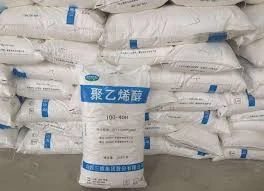Understanding Cellulose Paint Thickener A Vital Component in Paint Formulation
In the realm of industrial and artistic painting, achieving the perfect consistency and texture is paramount. One crucial component that plays a significant role in paint formulation is cellulose paint thickener. This natural polymer derived from cellulose has gained popularity due to its unique properties that enhance the viscosity and stability of various paint products. This article delves into the significance, types, applications, and benefits of cellulose paint thickener.
What is Cellulose?
Cellulose is a complex carbohydrate that constitutes the primary structural component of plant cell walls. This organic polymer is abundant in nature, making it an eco-friendly option for various applications, including the formulation of paints. When processed, cellulose can be modified to produce several derivatives, such as methylcellulose, hydroxypropyl methylcellulose, and carboxymethyl cellulose, each with distinct properties tailored for specific uses in paint.
Types of Cellulose Paint Thickeners
There are several types of cellulose derivatives that can be used as paint thickeners, including
1. Methylcellulose (MC) This derivative is widely utilized for its ability to improve the water retention and workability of paints. Its thickening properties can enhance the overall texture, making it easier to apply.
2. Hydroxypropyl Methylcellulose (HPMC) Known for its exceptional film-forming capabilities, HPMC is often used in water-based paints. It provides a smooth application and enhances the durability of the paint film.
3. Carboxymethyl Cellulose (CMC) This anionic derivative improves the viscosity of both water-based and oil-based paints. Furthermore, CMC is known for its stability and ability to provide a uniform paint consistency.
Each type of cellulose thickener offers unique characteristics, allowing formulators to select the appropriate thickener based on the specific requirements of their paint products.
Applications of Cellulose Paint Thickeners
Cellulose paint thickeners are versatile and can be employed in various types of paint formulations, including
cellulose paint thickener

- Architectural Paints Cellulose thickeners help achieve the desired viscosity, ensuring that the paint spreads evenly on surfaces. This is crucial for both aesthetic appeal and functional performance.
- Automotive Coatings In automotive paint formulations, cellulose thickeners contribute to scratch resistance and durability while maintaining a smooth finish.
- Industrial Coatings For industrial applications, cellulose thickeners enhance the performance of protective coatings used in harsh environments.
- Artistic Paints In the world of fine arts, artists often seek thickeners to modify the texture and flow of their paints, allowing for creative expression and varied techniques.
Benefits of Using Cellulose Paint Thickeners
1. Eco-Friendly Being derived from natural sources, cellulose thickeners present an environmentally friendly alternative to synthetic additives.
2. Improved Texture and Consistency Cellulose thickeners enhance the viscosity and workability of paint, leading to better application and a more uniform finish.
3. Stability They provide long-term stability to paint formulations, preventing separation and settling.
4. Enhanced Film Properties The incorporation of cellulose thickeners can improve the film-forming ability of paints, leading to enhanced durability and resistance to environmental factors.
Conclusion
In the ever-evolving field of paint formulation, the role of cellulose paint thickener cannot be overstated. It offers a combination of environmental benefits, superior performance, and versatility, making it a go-to choice for formulators across different sectors. As demand for eco-friendly and high-quality paints continues to rise, cellulose paint thickeners will undoubtedly remain integral to the development of innovative and effective paint products.




